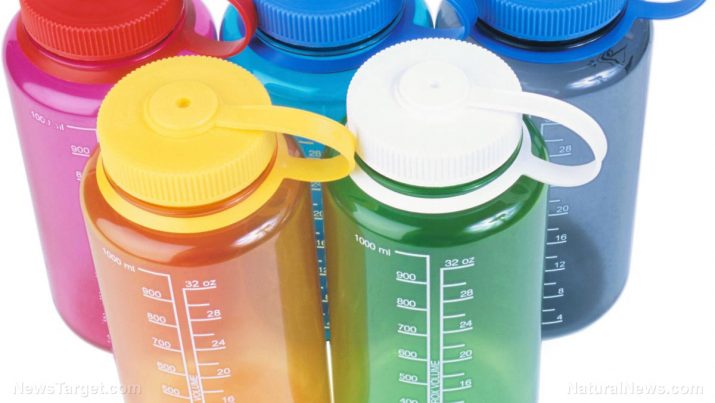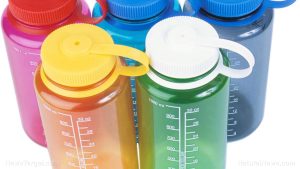
Polyethylene — toxicity, side effects, diseases and environmental impacts
Thursday, November 30, 2017 by Michelle Simmons
http://www.naturalpedia.com/polyethylene-toxicity-side-effects-diseases-and-environmental-impacts.html

Polyethylene is a thermoplastic polymer that has a variable crystalline structure. It is one of the most commonly produced plastics worldwide, with tens of millions of tons produced every year. It is produced by linking ethylene molecules to a larger molecule that has a branched chain structure. It is commonly used in cosmetics and personal care products, food packaging materials, and medical devices such as prosthetic.
There are different types of polyethylene. These include: low density polyethylene (LDPE) which is used in shopping bags; linear low density polyethylene (LLDPE); high density polyethylene (HDPE) which is used as a plastic for milk cartons, laundry detergent, garbage bins, and cutting boards; and ultrahigh molecular weight polyethylene (UHMW) which is used in bulletproof vests.
List of known side effects
There are several known side effects of polyethylene in humans. One of these is it may cause slight skin irritation. When inhaled, it caused proximal scleroderma, Raynaud phenomenon, joint involvement, pulmonary manifestation, and esophageal involvement in some people. Moreover, it may cause asthma. The chemical was also found to be toxic to the immune system. In addition, it was found to be a potential carcinogen.
Body systems affected by polyethylene
The body systems affected by polyethylene include the integumentary system, respiratory system, immune system, skeletal system, and muscular system.
Items that can contain polyethylene
Some of the products that contain polyethylene are most likely already in the household and at the supermarket. These include sandwich bags, freezer bag, cling wraps, moisture barriers, food packaging, bakery wrapping, coatings in fruit juice boxes, detergent bottles, shampoo bottles, grocery bags, cereal box liners, and straws. The chemical can also be an ingredient for skin care products, such as mascaras, foundations, acne scrub, shower scrub, skin cleansers, lip gloss, eyeliner, face powder, and pressed powder. Some of these products are in the brand names Revlon, Almay, L’Oreal, Peter Thomas Roth, Yardley, Avon, Neutrogena, and Lab Series.
How to avoid polyethylene
There are several ways on how to avoid polyethylene exposure when handling it, according to the Centers for Disease Control and Prevention. One of these ways is to avoid inhalation of its dust particles. Another way is to use safety goggles when working with the chemical to prevent eye contact with the chemical. Since the chemical can be swallowed, it is important to refrain from eating, drinking, or smoking when working with it. According to an entry by Alternet.org, other ways of avoiding polyethylene products is to check the label and simply do not use the products that contain polyethylene and do not heat or microwave food in plastic chemicals.
Where to learn more
- Crest Toothpaste Contains Plastic
- Antiperspirants and Deodorants: Do You Know What You Are Spraying Under Your Arms?
- The end of plastic landfill? Researchers discover caterpillar that eats plastic; it’s called a “wax worm”
- Harmful polyethylene microbeads are found in popular toothpastes
- 15 Petrochemical Skin Care Ingredient to Avoid
Summary
Polyethylene, one of the most widely produced plastic in the world, is a thermoplastic polymer that has a variable crystalline structure. It is commonly used in cosmetics and personal care products, food packaging materials, and medical devices.
Polyethylene may cause slight skin irritation, asthma, and even cancer.
Polyethylene, if inhaled, may cause proximal scleroderma, Raynaud phenomenon, joint involvement, pulmonary manifestation, and esophageal involvement in some people.
Polyethylene may be toxic to the integumentary system, respiratory system, immune system, skeletal system, and muscular system.
Sources include:
Tagged Under: Tags: Polyethylene






